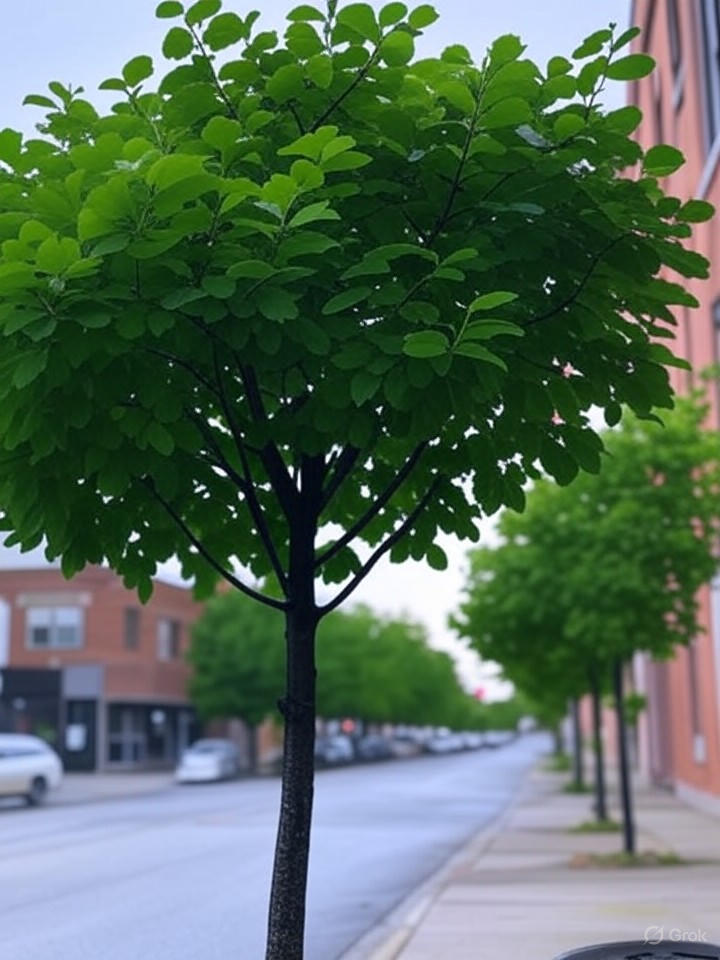In the heart of bustling cities, where concrete dominates and green spaces are precious, street trees have long puzzled researchers with their unexpected resilience during prolonged dry spells. While their counterparts in expansive parks often wilt under drought stress, these urban sentinels lining sidewalks and roadways seem to thrive, drawing on hidden resources that defy the arid conditions. A groundbreaking study highlights how leaky municipal water pipes may be the unsung heroes, providing a subterranean lifeline that keeps these trees hydrated when rainfall is scarce.
The phenomenon came into sharp focus through isotopic analysis of tree tissues, revealing that street trees absorb water with chemical signatures matching treated municipal supplies rather than natural rainwater or groundwater. This suggests that imperfections in urban infrastructure—pipes that lose up to 20% of water through leaks in some cities—are inadvertently sustaining arboreal life amid climate challenges.
Uncovering the Underground Oasis
Scientists traced this effect by comparing trees in various urban settings, finding that those near aging pipe networks exhibited lower stress indicators, such as healthier leaf canopies and sustained growth rates, even during severe droughts. In contrast, park trees, often isolated from such infrastructure, showed signs of dehydration, including premature leaf drop and reduced photosynthesis. The research, detailed in a July 2025 article from New Scientist, underscores how human-engineered flaws can create accidental ecosystems, turning potential waste into a vital resource.
This isn’t an isolated observation; similar patterns have emerged in other locales. For instance, a study at the University of Texas at Austin, reported in Phys.org in May 2024, found that trees along Waller Creek benefited from leaks contributing 25% to 50% of the stream’s flow, effectively drought-proofing the vegetation on campus.
Implications for Urban Forestry Strategies
For city planners and environmental managers, these findings flip the script on infrastructure maintenance. Traditionally, leaky pipes represent inefficiency and financial loss—costing utilities billions annually in wasted water—but they may also play a role in bolstering urban biodiversity. Experts argue that while repairing leaks is essential for conservation, targeted strategies could mimic this effect through intentional irrigation systems or permeable pavements that direct stormwater to tree roots.
However, reliance on leaks raises concerns about long-term sustainability. As climate change intensifies droughts, over-dependence on faulty pipes could leave trees vulnerable if repairs accelerate. The Axios Austin coverage of the UT study in May 2024 notes that such leaks help trees show less drought stress than rural counterparts, but it warns of potential contaminants like lead or chemicals seeping into the soil.
Balancing Infrastructure and Ecology
Industry insiders in urban planning are now debating integrated approaches, such as embedding sensors in pipe networks to monitor leaks and direct them beneficially without excess waste. In Montreal, as highlighted in a recent CTV News report, maple trees are quenching their thirst—up to 50 liters daily—from crumbling infrastructure, prompting calls for “green leaks” in city designs.
Broader research, including a 2022 study in the journal Trees, shows that drought tolerance varies by species, with some like elms and oaks better adapted to urban stressors, including pollution from traffic. Yet, the leaky pipe effect could amplify resilience across species, offering a buffer against heat waves.
Toward Resilient Urban Canopies
As cities grapple with escalating temperatures—projected to rise by 2-4 degrees Celsius in many regions by mid-century—these insights could reshape forestry practices. Municipalities might prioritize planting near utility lines or even engineer controlled leaks in new developments to support tree health without straining water supplies.
Ultimately, this serendipitous symbiosis between flawed pipes and hardy trees illustrates nature’s adaptability in human-dominated environments. For stakeholders in urban development, it’s a call to view infrastructure not just as a utility but as an ecological partner, ensuring that cities remain verdant even as dry spells become the norm. By leveraging such discoveries, planners can foster greener, more resilient urban areas for generations to come.




 WebProNews is an iEntry Publication
WebProNews is an iEntry Publication